There’s a bridge deep in Philadelphia’s Wissahickon Valley that’s an inaccessible work of art. It’s been there for thirty years now, having been lowered onto the craggy hillside by helicopter. There’s nothing quite like it. Fingerspan is a unique experience, if you can get there.
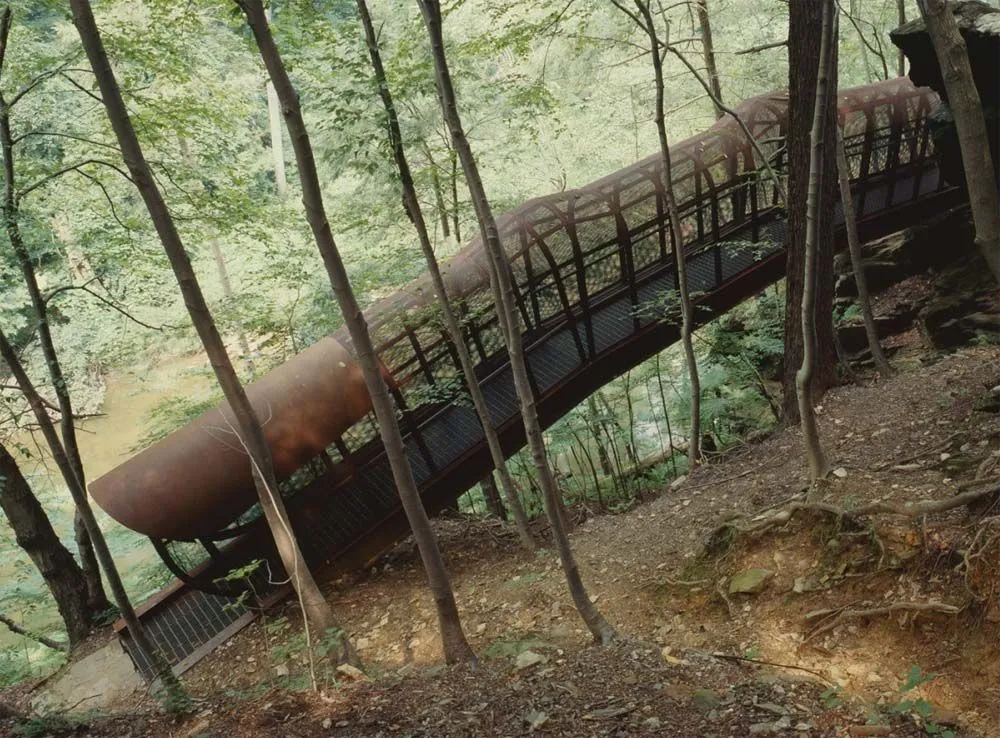 Fingerspan (Source: Association for Public Art)
Fingerspan (Source: Association for Public Art)
Rather, it was unique until recently, when the digital version of the experience stepped in. In the 1980s, artist Jody Pinto wasn’t thinking about how the online visitor might take in the Fingerspan experience. From her narration it’s clear she was depending on the actual encounter:
"As you pass through this bridge, you bring the bridge to life and at the same time you become the muscle and the sinew and the cellular structure of Fingerspan."
But what if your “muscle and sinew and cellular structure” is parked in front of a computer or a digital device anywhere but in the Wisshahickon Valley? Does that count as bringing the bridge to life? Does that help create the bridge in our imaginations and make us part of the bridge’s reality?
Now that we have the option of a digital encounter, will that become the preferred experience here or other sites that have been treasured as hyper real?
In 2012, Google Street View added to its array of digital experiences 9,500 panoramas of the Grand Canyon. “The Google Maps team walked through the canyon carrying the Android-operated, 40-pound Trekker backpacks,” we learn, “a 15-lens camera system…took the images.”
It’s an impressive experience; it’s a cool experience. It comes without the risk of dehydration, without having to share narrow trails over abysses with sleepy mules. But it comes without a sense of actual accomplishment, without real awe.
But wait a minute. Back in the 1872, the United States Congress took a good look at Thomas Moran’s 7-by 12-foot painting The Grand Canyon of the Yellowstone and responded by designating it the world’s first national park.
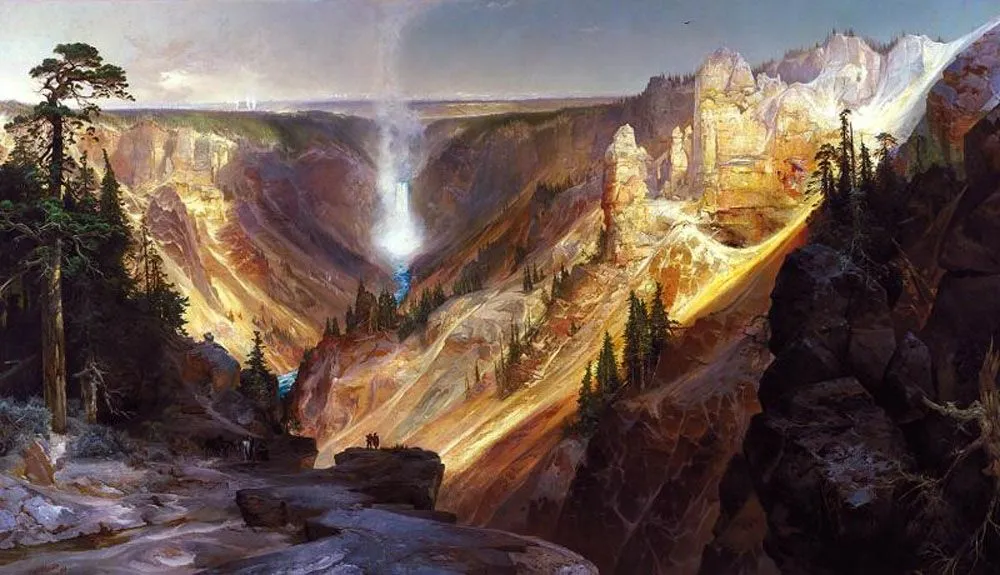 Thomas Moran, The Grand Canyon of the Yellowstone, 1872. (Source: Smithsonian American Art Museum)
Thomas Moran, The Grand Canyon of the Yellowstone, 1872. (Source: Smithsonian American Art Museum)
So maybe there is something to this idea of a surrogate experience adding significant value to the real thing.
Adding value to a real experience is just that. The painted or digital representation plays an important role in the extended life of the real thing, but it isn’t the same as the authentic thing, the authentic experience. Not even close.
When we experience Fingerspan online via Google Street View, as can be seen here and in the screenshots below, we have—we must always keep in mind—created a reality steps away from the original.

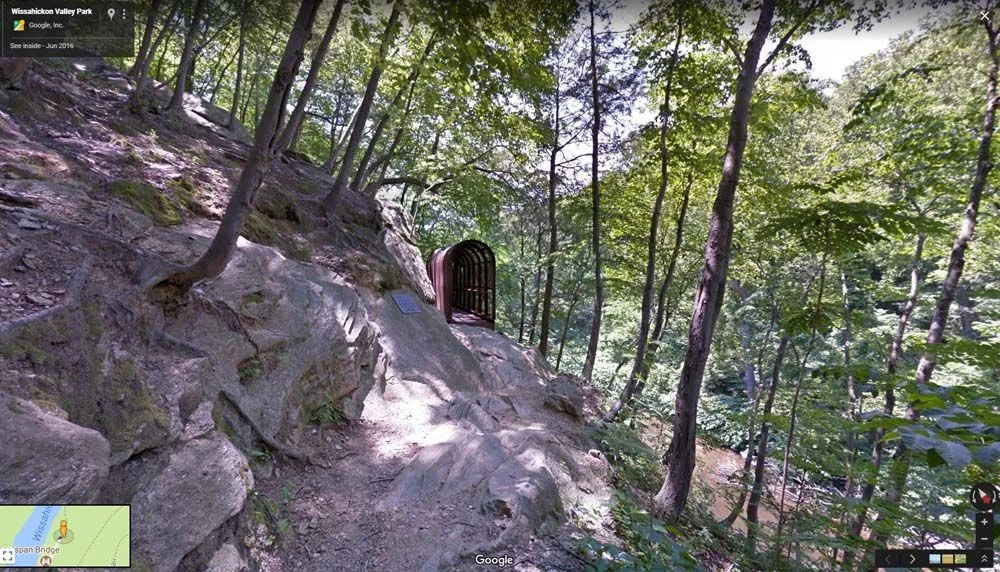
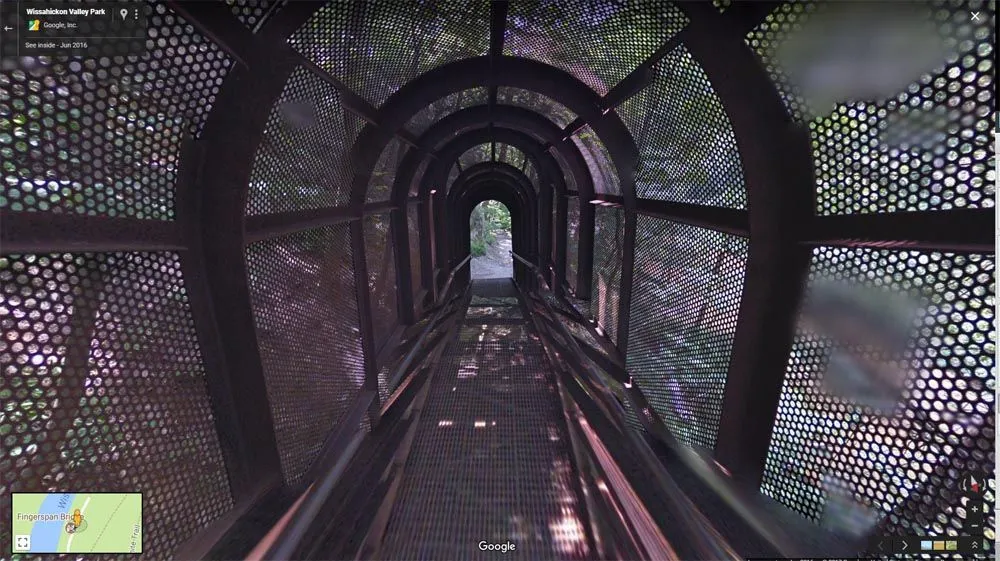
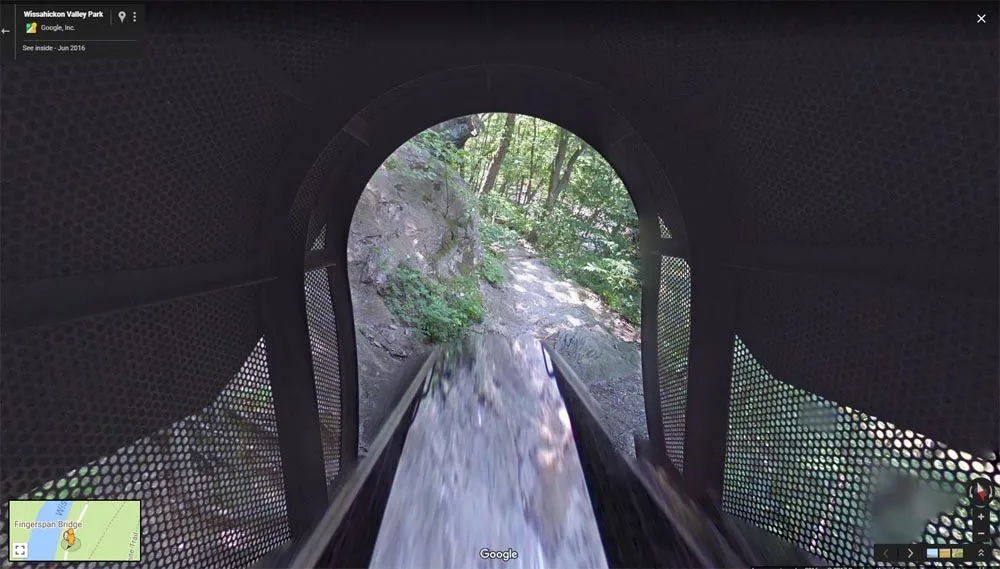 Fingerspan (Source: from Google Street View)
Fingerspan (Source: from Google Street View)
That new reality has different and wonderful characteristics compared with the original —most amazingly its universal accessibility. You can spend all the time you want traversing Fingerspan digitally, but unless you hike out to it, cross it on foot in boots-on-the-ground-style, bringing the bridge to life as the artist hoped, becoming its “muscle and…sinew and…cellular structure,” you haven’t had the real experience. You haven’t, says the artist, brought the bridge to life. To put it another way, without the real you crossing the bridge, it's a non-experience, a dead bridge.
Or could the opposite be true? That the online experience brings Fingerspan to life in ways the artist never imagined?
What do you think?
